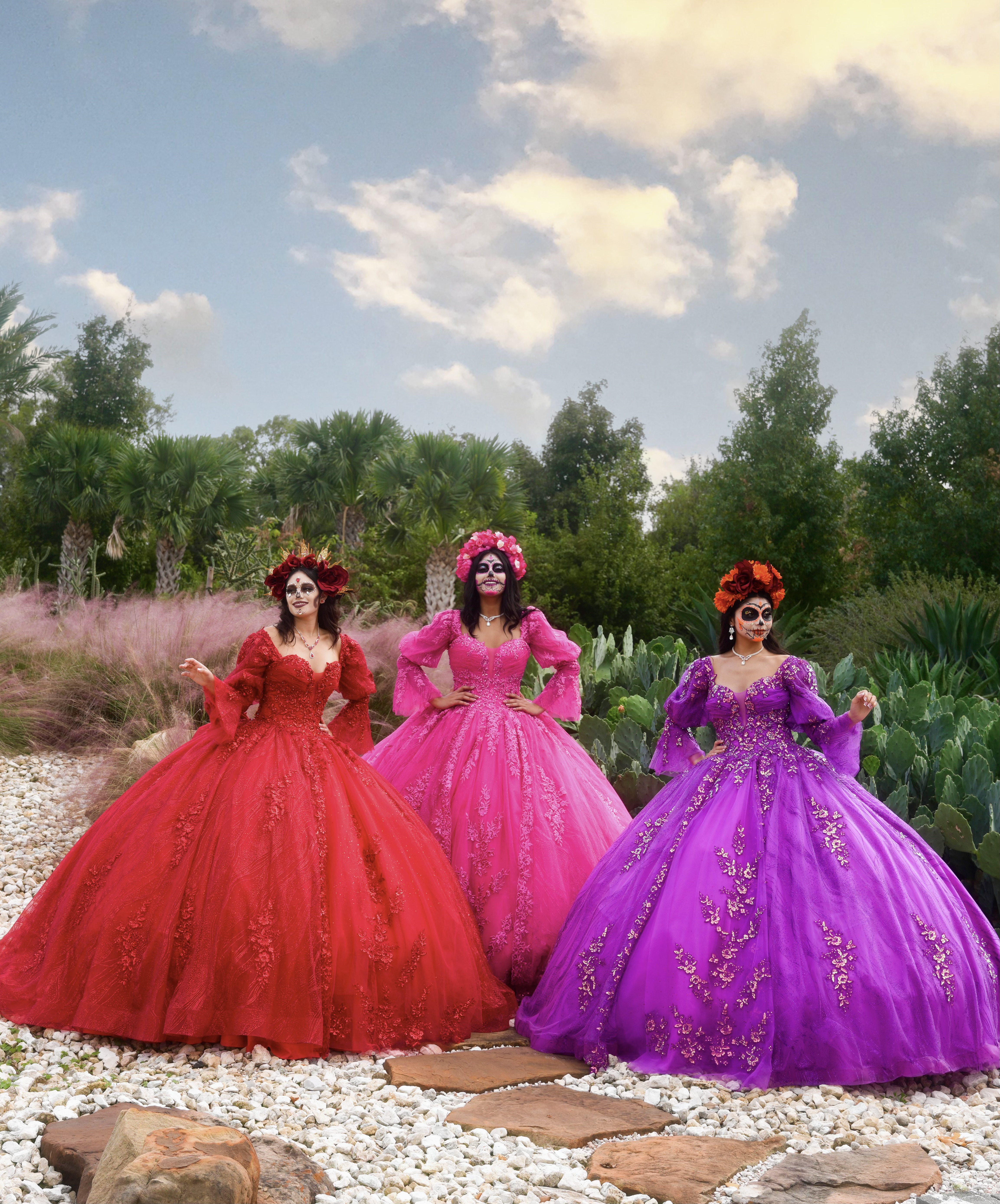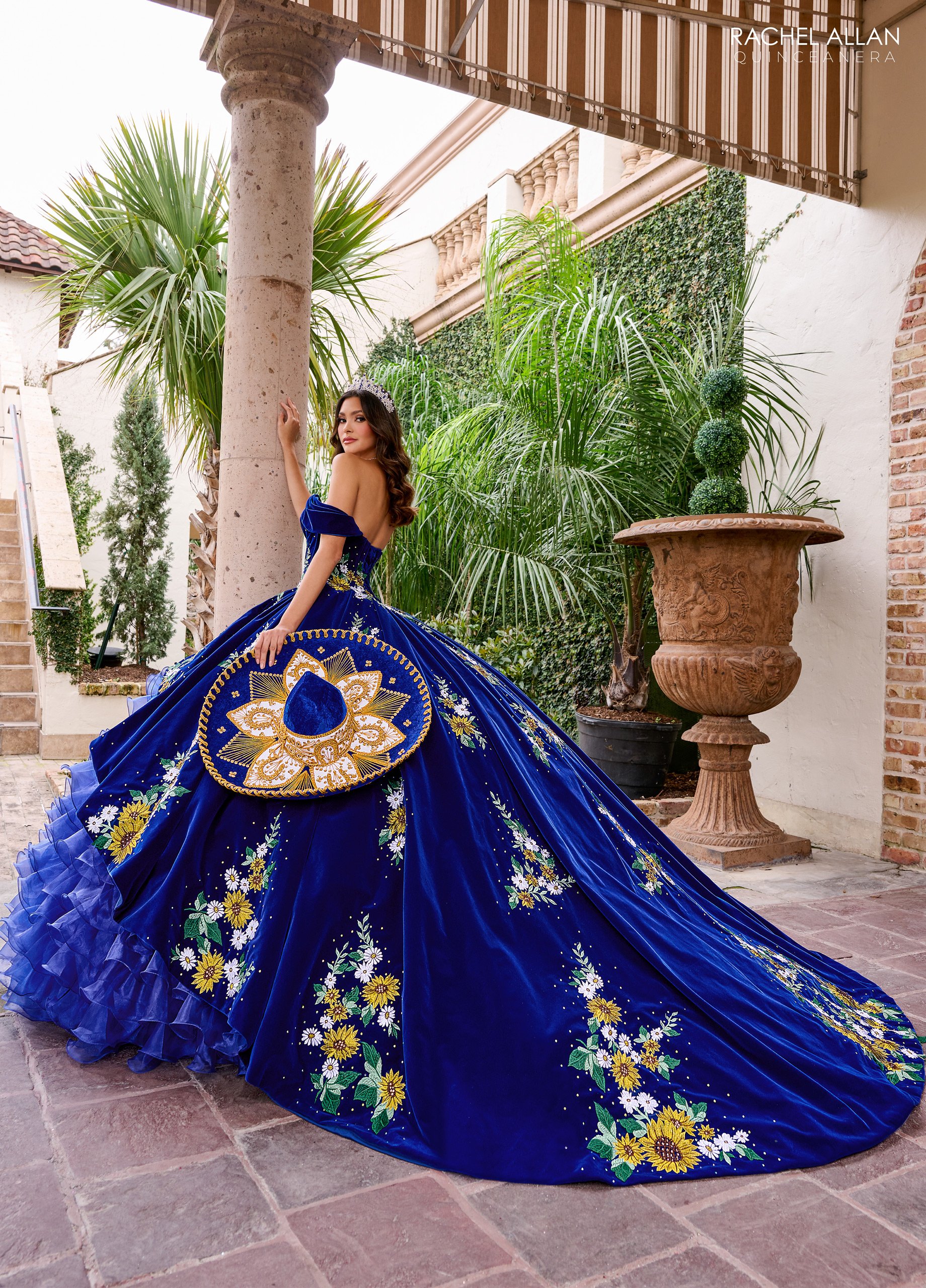Dia de Muertos, or Day of the Dead, is a unique and vibrant celebration in Mexican culture that holds a profound significance. It is a time when Mexicans come together to honor their ancestors, embrace the cycle of life and death, and revel in the rich traditions that have been passed down for generations. Let’s delve into the cultural significance of Dia de Muertos, explore its elements, and discuss how it can be beautifully incorporated into the celebration of a quinceañera, a special coming-of-age tradition for Mexican and Mexican-American girls.
The Significance of Dia de Muertos
Ancestral Reverence: Dia de Muertos is a time to remember and honor those who have passed away. Families set up ofrendas (altars) adorned with photos, candles, flowers, and the favorite food and beverages of their deceased loved ones. This act of reverence allows them to stay connected with their ancestors and feel their presence.
Celebration of Life and Death: In Mexican culture, death is not feared but embraced as an integral part of the human experience. Dia de Muertos is a celebration of both life and death, where families and communities come together to remember their loved ones and celebrate the legacy they left behind.
In Mexican folklore, it is believed that during the Dia de Muertos celebration, which typically occurs from October 31st to November 2nd, the boundary between the living and the dead becomes blurred. This is when the spirits of the deceased are said to return to the earthly realm to reunite with their families and loved ones.
Mesoamerican Roots: The origins of Dia de Muertos can be traced back to the indigenous peoples of Mexico, particularly the Aztecs. Their beliefs in the afterlife and connection with the spiritual realm greatly influence the modern celebration.
Incorporating Dia de Muertos into a Quinceañera
The Quinceañera Altar: One of the most beautiful ways to blend Dia de Muertos with a quinceañera is by creating a personalized altar as part of the celebration. This altar can include photos of ancestors, as well as symbols and decorations related to Dia de Muertos, like marigold flowers and sugar skulls.
Themed Decor and Attire: Incorporate the vibrant colors and symbols associated with Dia de Muertos into the quinceañera's decor and attire. Decorate the venue with papel picado (colorful cut-out paper), sugar skulls, and marigold flowers. The quinceañera and her court can wear traditional Dia de Muertos makeup, which includes elaborate skull face painting and colorful traditional Mexican clothing. A flower crown is a traditional and timeless accessory that can beautifully enhance the Quinceañera's attire, adding a touch of natural beauty.
Traditional Food and Drinks: Include traditional Mexican dishes and beverages on the quinceañera's menu that are favored by the deceased relatives, paying homage to their memory. Pan de Muerto (Day of the Dead bread) and atole (a hot corn-based drink) are popular choices.
Candlelight Ceremony: Light candles and incense during a dedicated ceremony to honor the deceased. Each candle can represent a different ancestor, and guests can share stories or memories about them.
Sugar Skulls and Face Painting: Set up a station where guests can create their sugar skulls or have their faces painted with Dia de Muertos-themed designs. This interactive activity can be a fun and memorable part of the celebration.
Butterfly Release: A unique and symbolic gesture is to have a butterfly release ceremony. This can be done during a specific moment in the Quinceañera, perhaps during a meaningful speech or as part of a formal ceremony. Releasing monarch butterflies into the air is a powerful way to symbolize the spirits of departed loved ones returning to the celebration.
Remembering Loved Ones: As part of the quinceañera program, include a moment of silence or a special dance that honors the memory of the deceased relatives. This can be a touching and emotional aspect of the event.
Dia de Muertos is a powerful and meaningful celebration deeply rooted in Mexican culture. By incorporating its traditions into a quinceañera, this coming-of-age milestone becomes even more significant and resonant. It serves as a beautiful reminder that life and death are intertwined, and it allows the quinceañera and her family to pay tribute to their heritage and loved ones. This fusion of two important traditions showcases the richness and depth of Mexican culture, making the quinceañera an event that will be remembered for generations to come.







